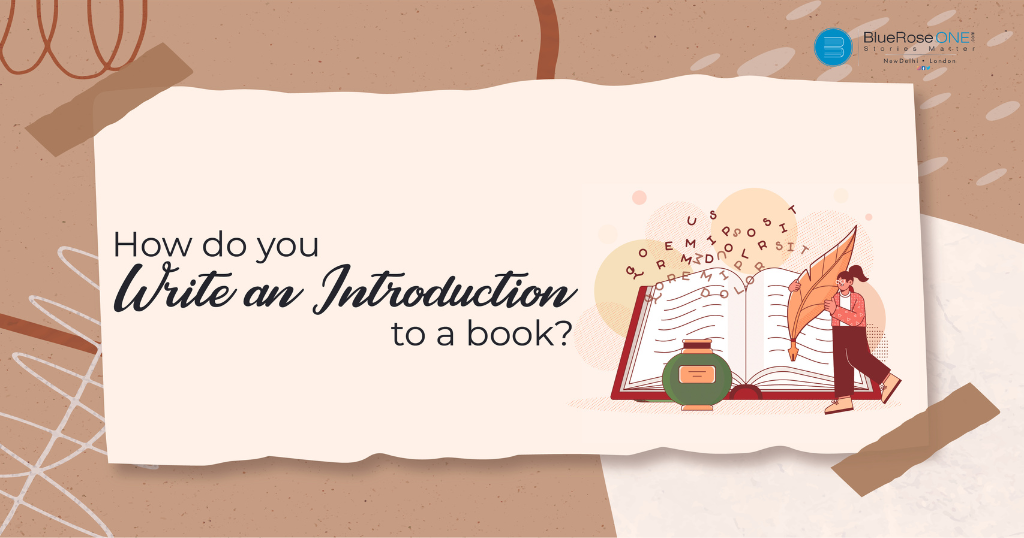The book’s introduction is your literary handshake with the reader; it’s like a blind date set up by an unknown entity—your chance to make a lasting first impression. It acts as a portal into the world you’ve built, inviting readers to enter and embark on the adventure you’ve designed.
Read: 15 Easy Hacks to Inspire Yourself to Write a Book and Get it Published Easily
But how can you write an opening that captivates your audience while also setting the tone for the rest of the story? In this article, we’ll look at the art of introduction writing, present examples, and address frequently asked questions to help you write an introduction that will leave an impression on your readers.
What is an introduction to a book?
Before delving into the intricacies of writing a compelling book introduction, let’s define what it is. An introduction in a book serves several crucial purposes:
- Hooking the Reader: The fundamental purpose of captivating the reader in the opening is to quickly capture their attention. A well-crafted hook makes a great first impression, enticing the reader to continue reading your work. This may be accomplished by asking a thought-provoking question, providing a surprising fact, drawing a vivid scenario, or constructing a powerful remark.
- Setting the Tone: The first chapter of a book establishes the tone, atmosphere, and style that readers may expect throughout the story. It’s similar to establishing the emotional tone of the tale. An introduction to a romance novel, for example, may express a warm and romantic tone, but an introduction to a thriller may conjure tension and suspense. This tone sets the tone for readers’ expectations and shapes their emotional connection with the story.
- Introducing the Theme: The introduction is frequently used to introduce the core subject or idea that the book will examine. The underlying messages, thoughts, or concerns that the author seeks to address are referred to as themes. The topic, whether it’s love, resilience, societal injustice, or the human condition, is at the centre of the story. Authors offer readers an early view into the essence of the tale by providing the topic in the opening, helping them to comprehend the book’s deeper purpose.
- Presenting the Author: The introduction can also be used to introduce the author to the reader. While not all beginnings include this component, it may be useful, especially in nonfiction works or when the author’s history is pertinent to the subject matter of the book. Introducing the author entails providing information about their qualifications, goals, or personal connection to the issue. This information contributes to the author’s credibility and gives readers a background for understanding the author’s point of view.
You may also like: How to Design a Book Back Cover in 5 Simple Steps
How Do You Start a Good Introduction for a Book?
- Start with a hook: Begin with a sentence or paragraph that captures the attention of the reader. This may be an intriguing inquiry, an unexpected fact, a vivid description, or a thought-provoking comment.
- Set the scene: Give context to the story. When and where does it happen? What about the background or setting? This allows readers to imagine themselves in the world they are about to enter.
- Introduce the Main Character or Subject: If your book revolves around a central character, introduce them early on. Describe their personality, quirks, or initial circumstances. For non-fiction, introduce the main topic or subject matter.
- Establish Conflict or Tension: Create intrigue by hinting at the conflict or problem that the story will address. This could be a personal struggle for the protagonist, a mystery to be solved, or a challenge to be overcome.
- Foreshadow or tease: Give readers a taste of what’s to come without revealing too much. Tease them about upcoming events or developments to maintain their curiosity.
- Engage Emotionally: Appeal to the reader’s emotions by creating empathy or a sense of connection with the characters or themes. This helps forge a strong bond early on.
You may also like: How to Publish My Book | Self Publish Your Book | BlueRoseOne
How Do You Introduce a Book in a Paragraph?
A concise yet impactful introduction can often be encapsulated in a single paragraph. Here’s an example of an introductory paragraph:
“A shadowy figure emerges from the fog in the dimly lit streets of Victorian London, shrouded in mystery and driven by an insatiable thirst for justice.” This is the world of ‘The Enigmatic Detective,’ where danger lurks around every corner. We’ll uncover the mysteries of a city beset by crime and corruption as we dig into the life of Detective Alexander Blackwood. But there is a deeper mystery behind the gaslit lanes and cobblestone streets—the enigma of the investigator himself.”
This paragraph performs three important introduction tasks: it establishes the setting (Victorian London), introduces the primary character (Detective Alexander Blackwood), develops conflict (crime and corruption), and generates interest (the detective’s riddle).
You may also like: Fatal Flaw: Definition, Types, Example and More
What is an Introduction to a Book for Kids?
Introductions for children’s books should be engaging and age-appropriate. Consider using vibrant imagery, playful language, and relatable characters to draw young readers into the story. Here’s an example from a children’s book:
“Once upon a time in a not-too-distant land, there lived a curious little squirrel named Sammy.” Sammy’s fluffy tail wiggled with delight as he embarked on a journey unlike any other. Join Sammy as he explores the enchanted forest, makes new friends, and sets out on a journey to defend his home from a nefarious gnome.”
The opening in this example introduces the main character (Sammy the squirrel), the environment (an enchanted woodland), and teases the adventure and difficulty Sammy will experience.
You may also like: How to Publish a Book? | Publish Your Book | BlueRoseOne
Is the preface and introduction the same?
No, the preface and introduction are not the same. They serve different purposes in a book:
- Introduction: As discussed earlier, the introduction serves to engage the reader, set the tone, and introduce key elements of the story or subject matter. It’s typically part of the main narrative.
- Preface: A preface is a separate section that the author or another notable figure writes to provide additional context, background information, or a personal note about the book. It often appears before the main text and is not a part of the story itself.
You may also read: Scion of Ikshvaku by Amish Tripathi: Book Review
What is another word for the introduction of a book?
While “introduction” is the most common term, you may also come across these synonyms or related terms:
- Prologue: A prologue is a separate section at the beginning of a book that provides context or sets the stage for the main narrative. It may offer insights or events that precede the main story.
- Opening: This is a more general term for the beginning section of a book, which includes the introduction.
- Preamble: Similar to a prologue, a preamble offers introductory remarks or explanations before the main content begins.
What is the introduction section of a book?
The introductory portion of a book includes the first few pages or chapters that act as the introduction to the tale. Depending on the intricacy of the book, it might range from a single introduction paragraph to multiple chapters. This part lays the groundwork for the story, introduces characters or themes, and entices readers to keep reading.
Read: Learn How to Publish Mystery Novels: A Complete Fiction Genre Guide
In its simplest form, crafting an engaging start for your book entails developing a hook, setting the scene, introducing characters or themes, and creating curiosity.
It’s your chance to establish a lasting first impression and inspire readers to go further into your creative universe. Whether you’re writing a novel, a nonfiction piece, or a children’s book, mastering this technique may enhance your narrative and link you with your audience from the start.















